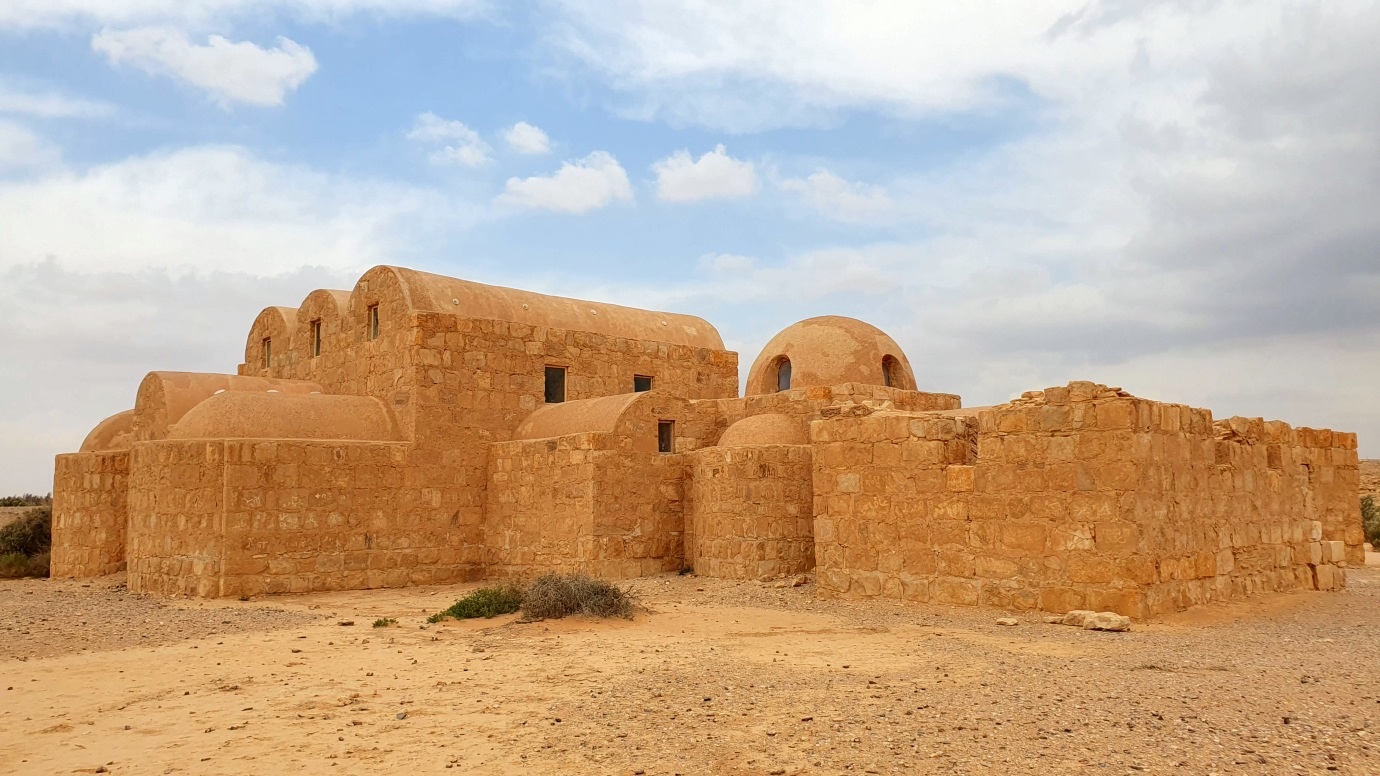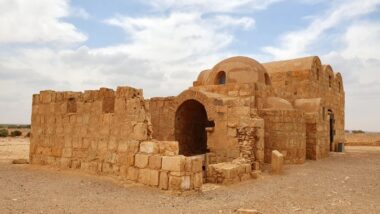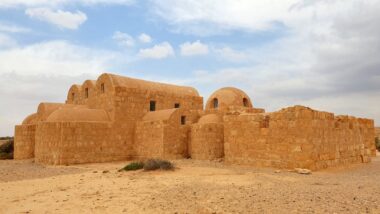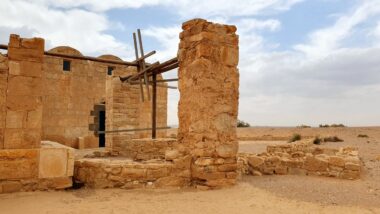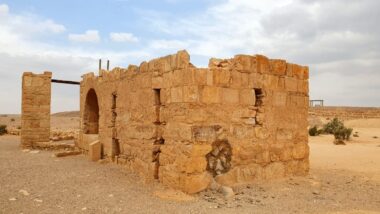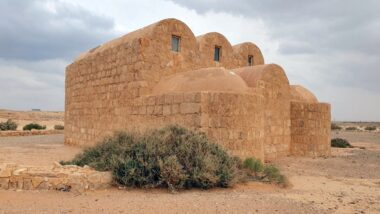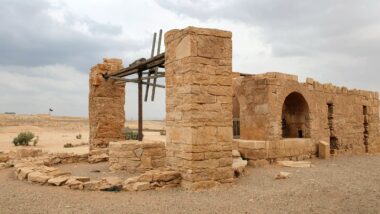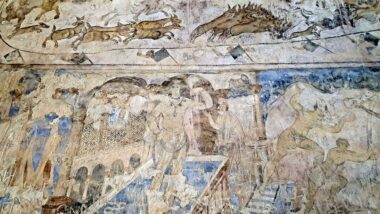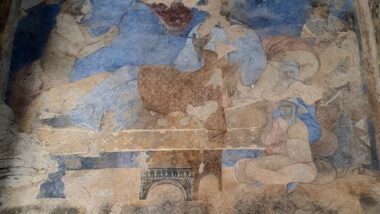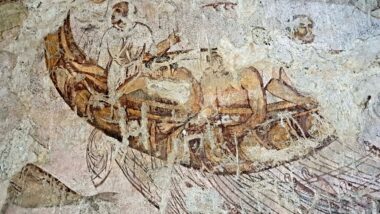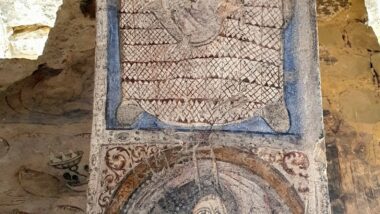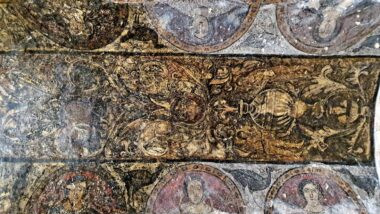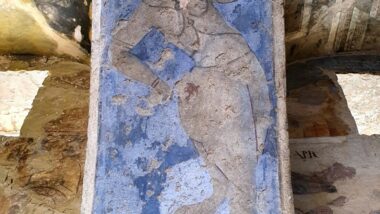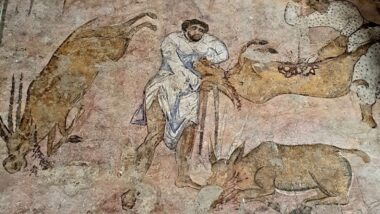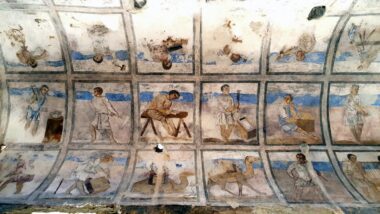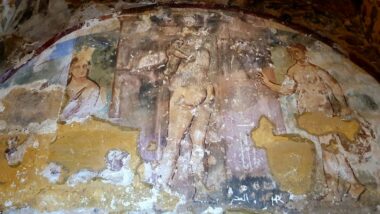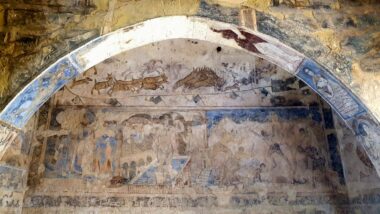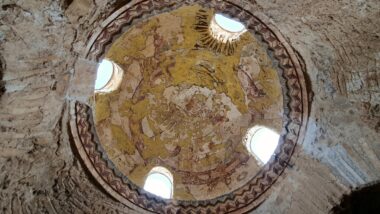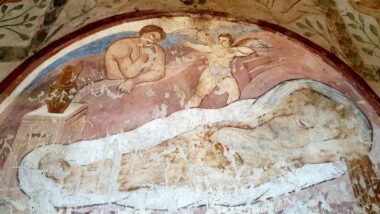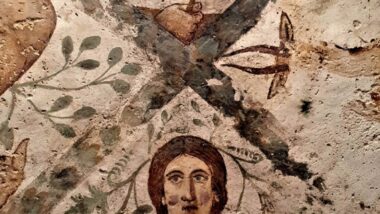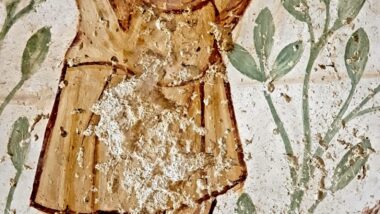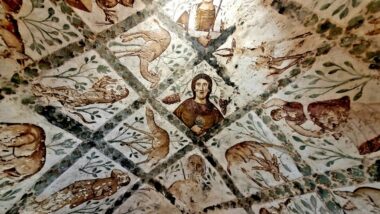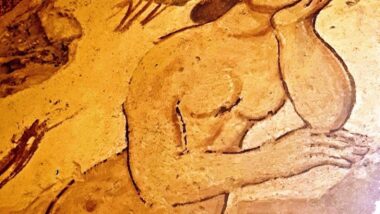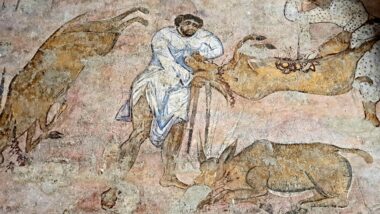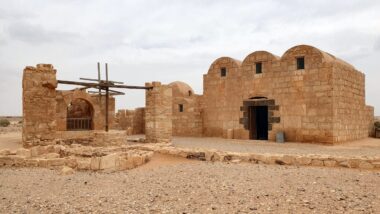The guard at one of the best-preserved desert buildings of the Umayyads explained frescoes to us, which was our highlight of a trip into the Eastern Desert. The little castle is part of a much greater complex that served as a caravanserai, bathhouse, and hunting lodge. It is renowned for its rather risqué 8th-century frescoes of wine, women, and wild times.
This desert gem was discovered by Czech scholar and explorer Alois Musil, aka Sheikh Musa (1868-1944), who passed away on April 12, 1944. Soon, we will remember the 80th anniversary.
Once we entered, we were greeted by two bare-breasted women painted on the arches, holding bowls of food (or money) against a blue background draped in richly detailed cloth. Five centuries before the Early Renaissance in Europe, these frescoes depict a touchingly human quality – wrestlers warm up before the contest, a woman dressed in a mere strip of cloth bathes without coyness in a hinted patch of sunlight, the ear of a gazelle twitches as the herd surges ahead of the hunt, dogs pant as they race across the west wall, driving wild onagers into a trap of nets. Even the mundane construction of the baths is immortalized in the frescoes – in the compartmentalized images on the ceiling, depicting quarrying, moving the stones by camel, carpentry, and plastering of the walls.
These are not the typical stylized images of the day, belonging to a religious canon of signs and symbols. Instead, they appear to be a unique attempt to capture daily reality – quite unlike the geometric imagery that has come to be associated with early Islamic art.
Parking location: 31.802921N 36.588577E (🚻)


